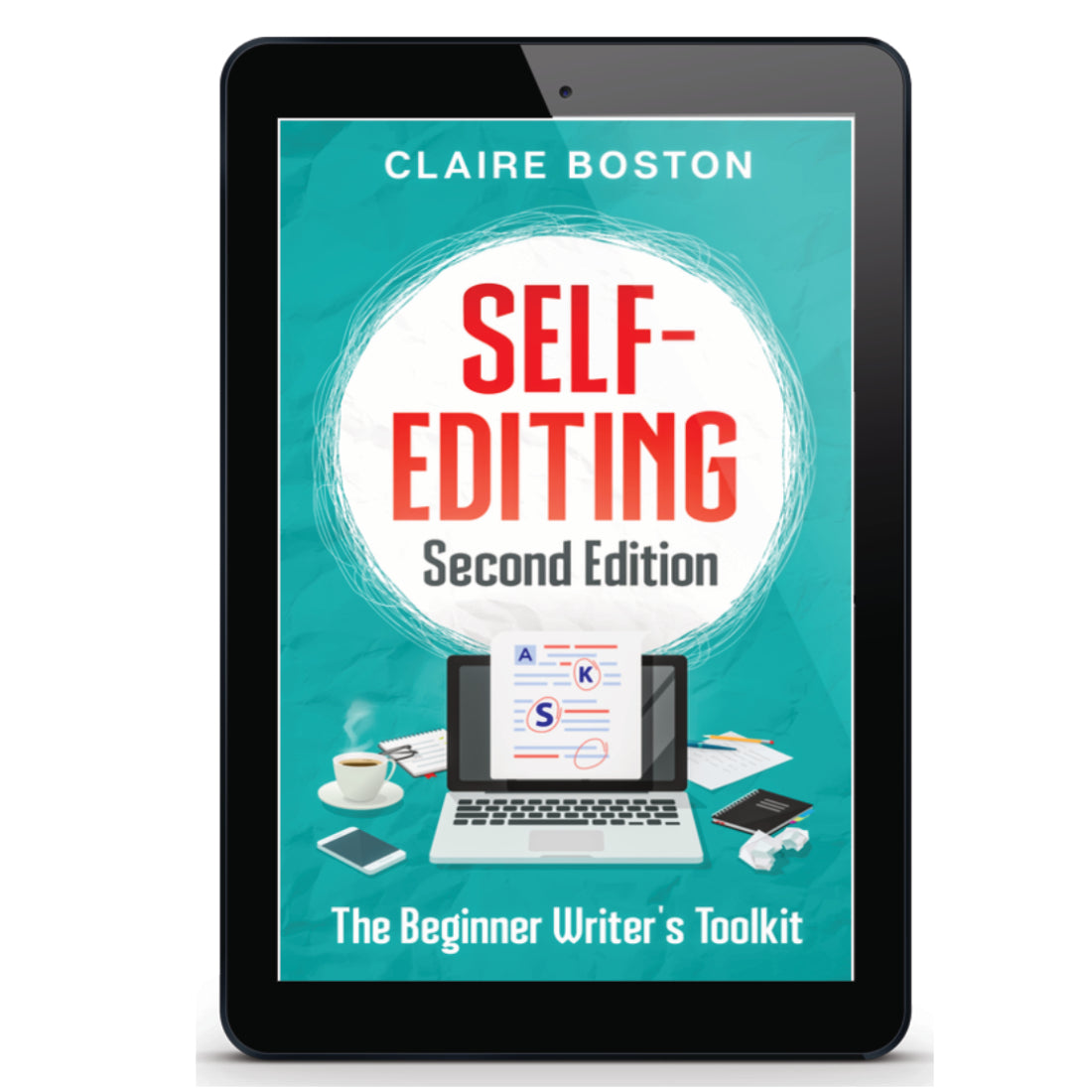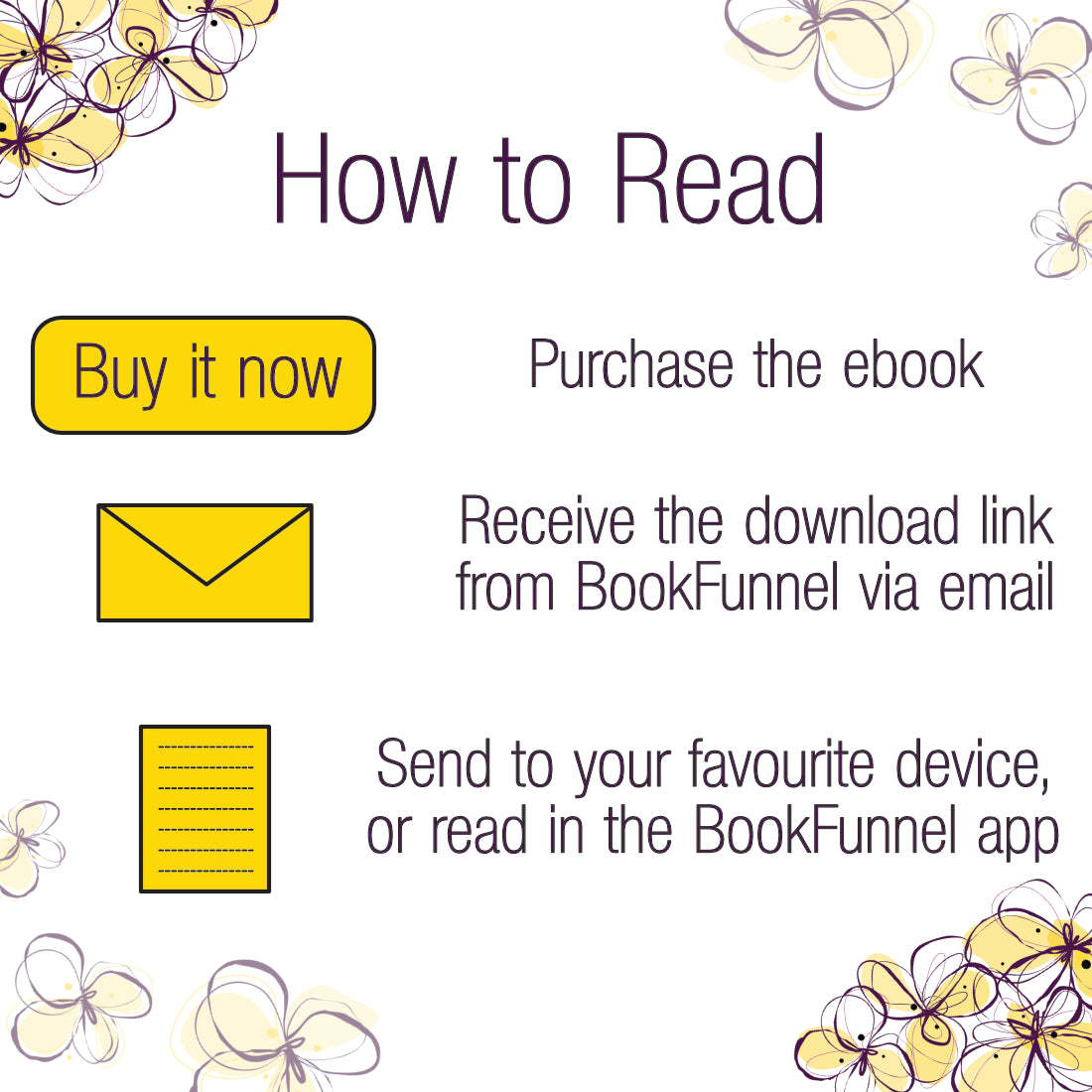Self-Editing: 2nd Edition (ebook)
Self-Editing: 2nd Edition (ebook)
Beginner Writer's Toolkit - Book 1
Formats
Couldn't load pickup availability
Or you can buy it on retailers HERE
- Purchase the E-Book
- Receive download link via Email from BookFunnel
- Send to preferred E-Reader and Enjoy!
You’ve finished the first draft of your novel – now to make it shine.
This book will show you how by focusing first on the structural aspects of a great book and then getting down to the nitty gritty of copy editing and proofreading.
Not sure if the beginning will hook the reader? Think your pacing might be off? Is something not quite right but you don’t know what it is? Learn how to analyse what’s not working in your manuscript and get tips on how to fix it.
Claire Boston has been writing, mentoring and judging competitions for more than ten years and continues to see the same issues in beginner writers’ work. She made the same mistakes when she was starting out. With her help you can avoid the pitfalls and ensure your manuscript is the best it can be before you submit it.
Chapter 1 Look Inside
Chapter 1 Look Inside
Introduction
Some people think the hardest thing about writing is finishing the first draft, and that can be true. For me, the most difficult part was realising the manuscript I had written wasn’t good enough to be published, but having no idea how to fix it. It took me a long time to learn what to look for when editing my work and I did this through finding a fantastic critique group, learning through organisations such as Romance Writers of Australia, and reading a whole heap of blogs and craft books. Although this learning process never ends, (hence this second edition) I want to make this journey easier for you.
I’ve been writing since 2006 and have published twenty-six novels. During this time, I’ve taken writing courses, read hundreds of blog posts, swapped ideas with other authors, and provided critique on many manuscripts. Over time, I’ve come to recognise the common mistakes beginner writers make.
Occasionally a writer will ask me, ‘Why should I edit my manuscript? Isn’t that what publishers are for?’ Yes, a publisher will edit your manuscript if they accept it for publication, but you need to make sure it’s as good as you can make it to have a publisher even consider offering you a contract. You aren’t giving yourself the best chance if you don’t deliver the most polished product you can. A publisher needs to be able to see a manuscript is marketable, and well edited novel is a step towards proving that.
If your aim is to self-publish, you may be saving yourself money by self-editing your manuscript. I know of editors who will charge significantly more if the work is a hot mess, or will simply not accept the job.
This book aims to help those of you who have finished your first draft and want to make your manuscript shine. It covers the different types of editing and outlines how to analyse your work. As I’m an author and not an editor, I’ll share with you my experiences and what I’ve learnt from having my work professionally edited. Many of the examples I give are from my earlier works, because I made the same mistakes when I started out.
While going through the suggestions, please remember there are always exceptions to the rules. Make sure you don’t stifle your own voice trying to follow everything in this book to the letter. The aim is for you to be able to analyse your work and recognise what you’re doing. Then you can decide whether to keep it, reword it or delete it.
TYPES OF EDITING
There are three types of editing and different terms are used to describe them. When I was fact-checking this book I found some of the terms being used interchangeably, so if you do decide to hire an editor, make sure you clarify what you want from them.
STRUCTURAL, DEVELOPMENTAL OR CONTENT EDITING
This is, as the name suggests, when you’re looking at the structure of your story. It’s the big picture elements: characterisation, plot, description, etc. Is your story arc smooth, do your characters develop throughout the story, do you have enough description, is there enough information for the reader to be able to immerse themselves, are the characters’ goals, motivations and conflicts strong enough?
COPYEDITING
Copyediting focuses on sentence structure, turns of phrase, spelling, grammar, style guides and the like. This phase of editing is all about tightening the writing, and ensuring the sentences flow well and the phrasing makes sense.
PROOFREADING
Proofreading is the final read of the manuscript when all the editing is done. On this pass you’re looking for spelling and punctuation mistakes that have slipped through the other editing phases. You shouldn’t be making any significant changes at this stage of the process.
A writer should complete all three phases before submitting their manuscript to a publisher or before sending it to a professional editor. If you haven’t polished your manuscript until it shines, you’re doing yourself a disservice. You want your editor to focus on the things you can’t pick up yourself.
That said, there also comes a time when you have to let go of your manuscript and send it out. Don’t use editing as an excuse to never finish your manuscript. It’s never going to be perfect, but this book aims to help you get it as polished as possible.
Share




